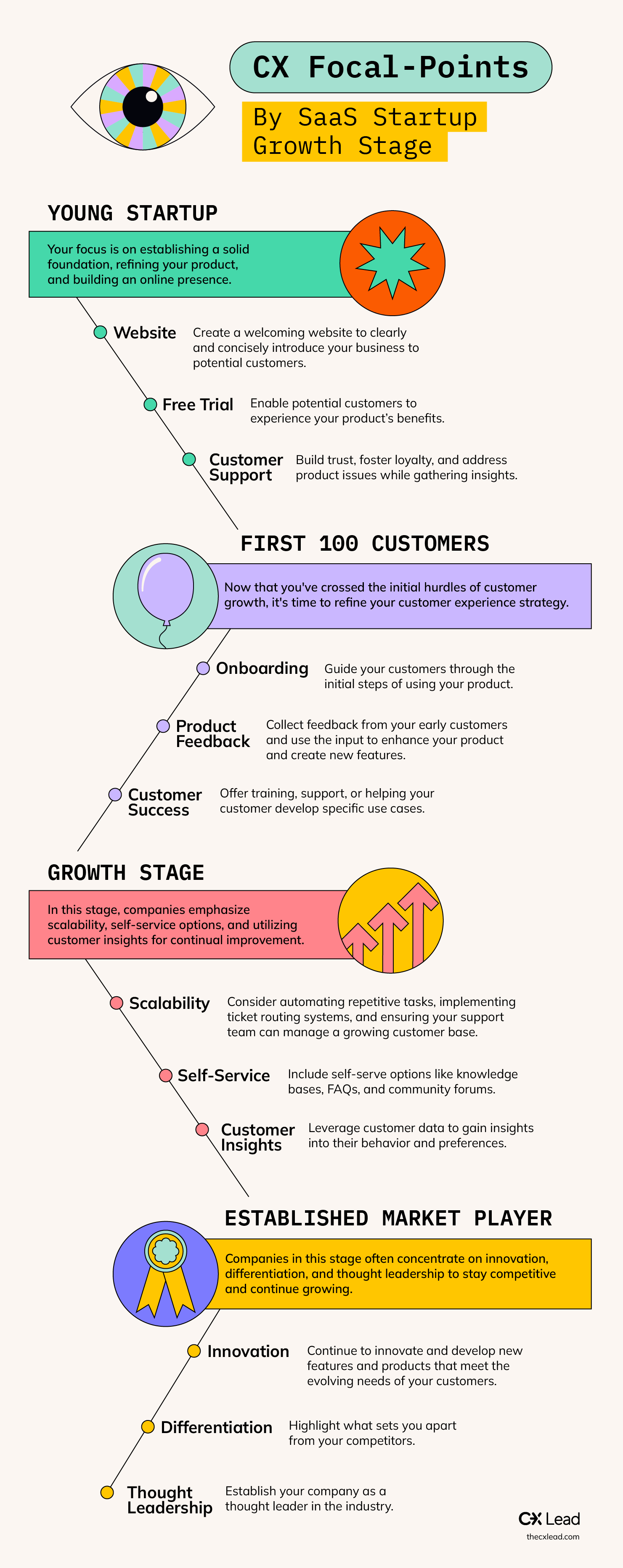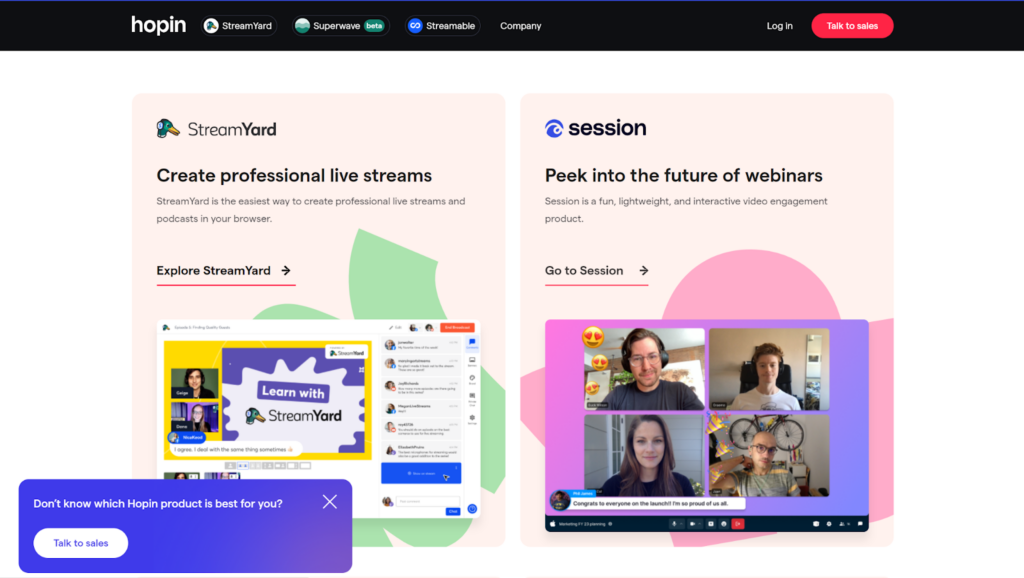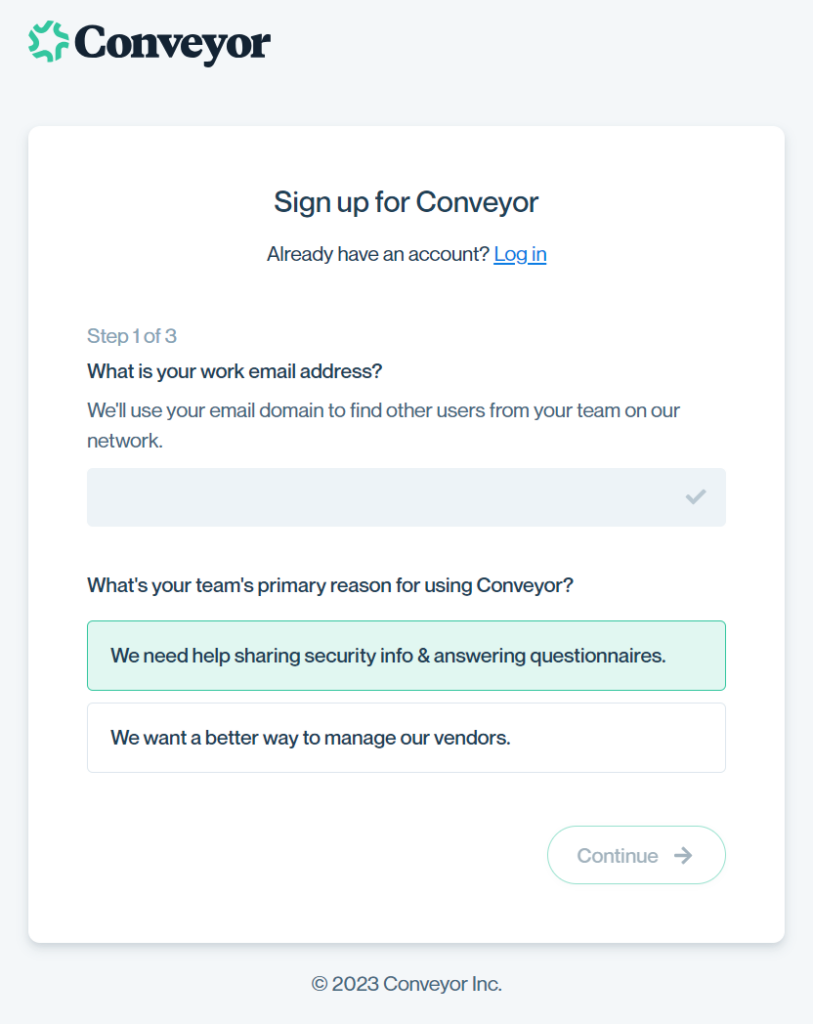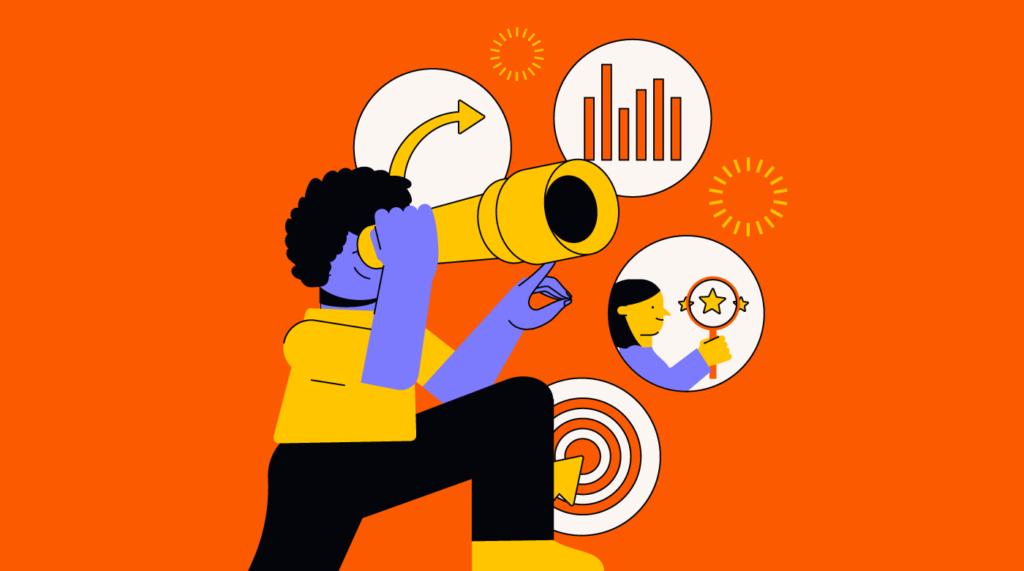As companies grow, their CX challenges and needs change, sometimes rapidly. You might go from selecting your first customer service solution to needing to outsource some service operations in as little as a year.
Since fortune favors the prepared SaaS company, it's important first to know what you might expect as your company scales towards success. Here I'll guide you through the essential CX touchpoints, whether you’re newly embarking on your journey from a young SaaS startup, already an established market player, or anywhere in between.

1) Young Startup
As a young startup, your SaaS company is in its infancy, often with a limited customer base. Your likely focus right now is on establishing a solid foundation, refining your product, and building an online presence.
At this stage, the world is your oyster. But to make the most of it, you need to get the basics right and know where to focus. Three key customer experience touchpoints that I recommend you put time and thought into are: your website, accessible trials, and customer support.
Website
Your website is often the first point of contact with potential customers. It needs to be your virtual handshake, conveying who you are and what you offer. You need a website that's clear, concise, and easy to navigate. After all, it’s the digital front door to your business. And don’t forget, make sure it's mobile-friendly and secure.
Example: Hopin, an online event platform, showcases a user-friendly, informative website. It is clear, concise, and easy to navigate, providing curious visitors with a seamless experience. The site effectively communicates the value of their platform for virtual and hybrid events. This straightforward approach contributes to Hopin's growth in the event technology sector as they establish themselves as a significant player.

I’ve had clients experience some uneasiness about what to include on their website, especially when a SaaS product is at such an early stage. Here’s the thing, nothing is set in stone. It’s natural for the specifics of the service offering to change over time, whether it be through bold innovative features, or shifting your communication strategy.
At the very minimum, throw a landing page up. Even something as simple as that can start drawing in useful insights from customers, or people who may one day convert to customers.
Free Trial
If your SaaS product is in a place where you can start gathering some beta feedback, or even a minimum viable product (MVP) launch, offer a free trial of your product to let potential customers experience the magic firsthand. The free trial should be easy to sign up for and use. It should also provide ample time for potential customers to evaluate the product's features and benefits. Remember, the goal here is to reduce friction and make the path from curiosity to conversion as smooth as possible.
Example: Take a look at how SaaS platform Conveyor offers a free trial of their customer security automation platform. Their trial sign-up process is the focused call to action (CTA) on their website, and their first step involves segmenting what your primary reason for signing up is, which will help them with their customer experience insights.

Do keep in mind, it’s important to have a well backed strategy when conducting a free trial. A few things to consider are: having a focused target demographic, timing of trial both in terms of launch date and how long it lasts for, and having strong messaging. As with any good customer experience strategy, make sure that you put some metrics forward ahead of time so that you can evaluate the insights that come in.
Customer Support
At this stage, your customer support and feedback is your insights goldmine. Not only that, but a well set up customer support process early on also creates an opportunity to provide excellent support to your early customers, strengthening customer satisfaction. It builds trust, fosters loyalty, and helps identify and fix any product-related issues.
Example: I used to work for an advertising start-up that offered services for higher education institutions looking to reach Gen Z. We were a small team of 12, and did not have an official customer support team. Considering our tight budget, we leaned into keeping the support line strong by utilizing our Hubspot marketing and sales account that we had spent the last year creating and finessing. A customer had brought to our attention via submitting a ‘Contact Us’ form that she was having trouble navigating another part of our website. Had it not been for the form, they would not have been able to contact us for support, and we would not have been able to quickly guide her to where she needed to go.
Although the primary purpose of the Hubspot platform was for sales and marketing, we had to get creative. Utilizing the platform was a great way to bring transparency and order to questions that customers had. It was our makeshift help desk. If you choose the scrappy route as we did, make sure to keep your customer support line quality by keeping an eye on questions, and responding to them promptly.
2) First 100 Customers
Have you acquired your first 100 customers? If this is where your company is currently at, you’re likely emphasizing onboarding, gathering valuable feedback, and ensuring a smooth initial customer experience.
Now that you've crossed the initial hurdles of customer growth, it's time to refine your customer experience strategy. Three touch points that I recommend you focus on are onboarding, product feedback, and customer success.
Onboarding
Customer onboarding is where you set the stage for a fruitful long-term relationship. It should be a smooth and efficient process that guides customers through the initial steps of using your product. The goal here is to help them get started quickly and easily.
Example: Airtable, a platform for creating and sharing relational databases, provides a comprehensive onboarding experience. For starters, curious individuals can get into the UI without email verification. Removing that friction leads to quicker value add for the user.
Another aspect of Airtable’s onboarding process that is worth noting is their optional ‘Tell us a bit about yourself’ step. Similar to what Conveyor has set up in their free trial pathway, Airtable includes some segmenting questions that help inform their personas early on. The sooner you can do this the better, so don’t wait until your customer pool is so large that the task becomes daunting.
Product Feedback
Your early customers are your biggest allies in product improvement. If you collect feedback from them regularly, you can use the input to enhance your product and create new features that address their needs.
Example: Trello, a project management tool, encourages users to submit feedback and feature requests. They have a chat feature, and what’s more, they actively engage with their user community. Trello’s customer feedback has led to a steady flow of product enhancements over the years.
What’s nice about Trello’s angle is that they collect customer feedback from various touchpoints. The information collected from individual feedback submissions will produce different insights than that of customers having visible conversations in an online community. I recommend following their example by collecting feedback in multiple ways.
Customer Success
Assist your customers in achieving success with your product. This may involve offering training, support, or helping them develop specific use cases. Customer success is all about ensuring that your customers are getting the most out of your product.
Example: Salesforce, a CRM platform, has a dedicated customer success team that helps customers make the most of their platform. They offer personalized guidance and resources to ensure users meet their business goals. They directly refer to themselves as “The Customer Company”, leading their customers towards success.
A common mistake is to interchange the terms customer support and customer success. Through both customer experience focal points, customer support is more reactive, while customer success tends to be more proactive.
3) Growth Stage
So you’ve knocked it out of the park in terms of establishing a customer base and are now expanding rapidly. In this stage, companies emphasize scalability, self-service options, and utilizing customer insights for continual improvement.
At the fast growth stage, your SaaS company is scaling quick! To keep up, focus on these essential customer experience touchpoints:
Scalability
Your customer support infrastructure must be scalable to handle the increasing volume of support tickets. Consider automating repetitive tasks, implementing ticket routing systems, and ensuring your support team can efficiently manage a growing customer base.
Example: Here, I’ll give you an example of a tool that can help you scale, Freshchat. This live chat platform allows support teams to manage a high volume of customer inquiries effectively. Fintech company, Klarna, has used Freshchat to stay directly connected in conversations with their customers as they were scaling. Klarna utilized Freshchat's features to enable quicker responses, smart assignment of chats, and personalized customer interactions. This resulted in a significant shift toward chat support, and decreasing phone support reliance.
Once scaling starts, it can be hard to keep up the connection with customers. Getting a solution in place, such as how Klarna used Freshdesk, can help your company stay in touch with who you’re serving.
Self-Service
Something to come to grips with is that your organization realistically may not be able to solve all customer issues as quickly as they come in. One way to help solve for this is to empower your customers to help themselves.
Example: The e-commerce platform, Shopify, offers a comprehensive help center with detailed guides and a community forum. This allows users to quickly find solutions to common issues, reducing the need for direct support.
Some examples of what to include in self-serve options include knowledge bases, FAQs, and community forums. You’ll help reduce the burden on your support team, and empower customers to find answers independently.
Customer Insights
Leverage customer data to gain insights into their behavior and preferences. These insights are valuable for improving the customer experience and developing new products and services that align with customer needs.
Example: Netflix is well known for using customer data to enhance the experience. In particular, it uses behavioral data and ratings of content to recommend personalized content to its customers. By understanding user preferences, they keep customers engaged and satisfied.
A characteristic about behavioral insights that makes them extra valuable is that a fair amount of this data is collected passively. The customer typically isn’t being reached out to and asked for something, which should really only be done every once and a while. Do make sure to keep ethical practice strong and ask for permission before tracking user behavior.
4) Established Market Player
The final stage to highlight, is where your SaaS company sits when it has firmly positioned itself in the market. Companies in this stage often concentrate on innovation, differentiation, and thought leadership to stay competitive and continue growing.
Now that you're an established market player, it's time to consolidate your position. Focus on these customer experience touchpoints to maintain your edge:
Innovation
Never rest on your laurels. Continue to innovate and develop new features and products that meet the evolving needs of your customers. This keeps your offerings fresh and exciting.
Example: Walmart’s website does a fantastic job at innovation. A couple years ago, it acquired Zeekit, a virtual clothing try-on company. In this digital experience, customers can now choose between 50 different body sizes to see how pieces of clothing fit. This personalization helps them navigate towards successful purchases.
If that wasn’t enough, this technology also includes a feature where customers can upload a photo of themselves, and a model body type will be shown to them that best resembles where they are at. Customers can then adapt their model choice to best represent their height, shape, and skin tone even further.
Differentiation
Another focal point to consider is differentiation. Highlight what sets you apart from your competitors. In a crowded market, your unique selling points should shine through in your marketing and sales materials.
Example: Apple not only dominates in sales, but also in customer loyalty. This loyalty lies in their creation of intimacy as well as emotional attachment to the brand. David Weinberger, senior researcher at Harvard’s Berkman Center summarizes it well: “Everything from opening up the box of an iPhone to holding it in your hand is a sensory pleasure. From its weight to the texture of its parts to the brilliance of its screen–it’s a multi-sensory pleasure machine engineered to make you bodily happy when you interact with it.”
No other competitor of Apple’s was doing this. Instead, other computer or music device options were mostly about function, with perhaps a bit of nice design. Apple made itself a strong product led brand, while still reaching into the identity of the people who choose to make a statement by purchasing its products.
Thought Leadership
The last focal point I’ll talk about in this stage is thought leadership. Establish your company as a thought leader in the industry. Typically, this involves having an actual person as that thought leader.
Example: For Airbnb, that thought leader is co-founder and CEO, Brian Chesky. Establishing him as the face and voice of this online marketplace for homestays and experiences, Brian has appeared in various publications and podcasts, actively engaging with people who want to take a deep dive into Airbnb’s business and social impact.
There are so many ways in which you can establish yourself as a thought leader. Content is a great lever to pull here to do just this. A few mediums to consider are: blog posts, e-books, and podcasts. You can self publish, as well as show up as a contributor on other publications, sharing insights and expertise.
Having an established thought leader within a company can significantly impact the customer experience. Thought leadership content not only educates and engages the audience but also provides valuable insights for them, addressing customer pain points and enhancing overall satisfaction.
Concluding Thoughts On Navigating Growth Stages For Exceptional Customer Experience
As a customer experience leader navigating the intricate landscape of the SaaS industry, understanding the nuanced focal points at each growth stage is pivotal for your company's sustained success. From the formative phases of a young startup, where prioritizing website clarity, accessible trials, and establishing robust customer support systems are crucial, to the critical juncture of acquiring the first 100 customers, emphasizing seamless onboarding, consistent feedback collection, and ensuring customer success become paramount.
Transitioning into the growth stage demands scalability in customer support, empowering users with self-service solutions, and harnessing invaluable customer insights to foster continual improvement. As your SaaS company matures into an established market player, relentless innovation, clear differentiation, and establishing thought leadership become the pillars for maintaining a competitive edge.
Remember, throughout these stages, the key to exceptional customer experience lies in adaptability, agility, and a deep-rooted commitment to understanding and catering to evolving customer needs. By leveraging these customer experience touchpoints across your growth trajectory, you solidify your position not only as a successful entity within the SaaS sphere but also as an enterprise dedicated to delivering unparalleled customer experiences that stand the test of time.


